Small overlap front: driver-side
Rating applies to 2009-13 models
Tested vehicle: 2012 Mazda 6i Touring 4-door
The Mazda 6 was redesigned for the 2009 model year.
| Evaluation criteria | Rating |
|---|---|
| Structure and safety cage | |
| Driver injury measures | |
| Head/neck | |
| Chest | |
| Hip/thigh | |
| Lower leg/foot | |
| Driver restraints and dummy kinematics The dummy’s head barely contacted the frontal airbag before sliding off the left side as the steering column moved 11 cm to the right, leaving the head vulnerable to contact with forward side structure. The side curtain airbag did not deploy, allowing the dummy’s head to hit the window sill and leaving it vulnerable to contact with outside objects. | |
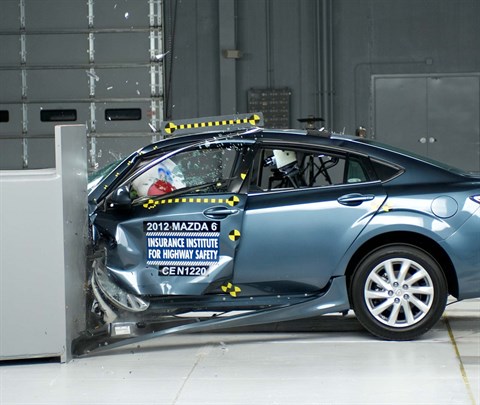
Action shot taken during the small overlap frontal crash test.
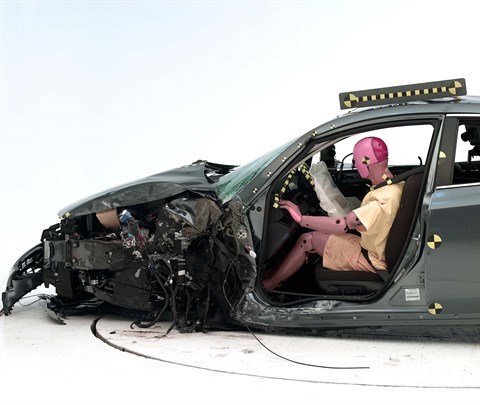
The dummy's position in relation to the door frame, steering wheel, and instrument panel after the crash test indicates that the driver's survival space was maintained reasonably well.
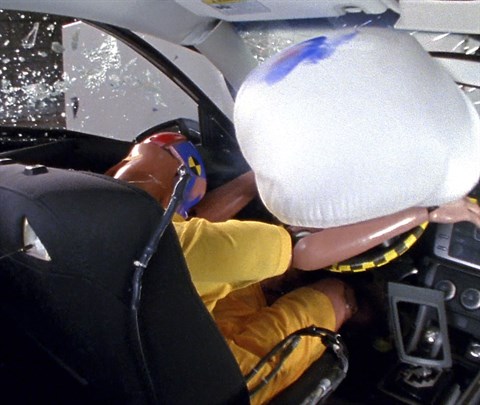
During the crash, the dummy's head barely contacted the frontal airbag before sliding off to the left as the steering column moved to the right. The side curtain airbag did not deploy, allowing the head to hit the window sill.
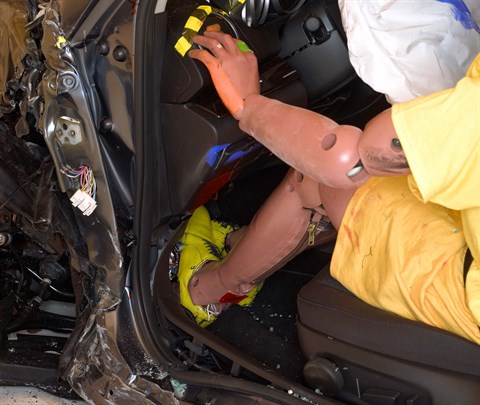
Except for door hinge pillar deformation, intrusion into the driver's space was reasonably well controlled, and risk of injuries to the dummy's legs and feet was low.
Moderate overlap front: original test
Rating applies to 2009-13 models
Tested vehicle: 2009 Mazda 6i Touring 4-door
The Mazda 6 was redesigned for the 2009 model year. Frontal ratings are assigned by the Institute based on a test conducted by Mazda.
| Evaluation criteria | Rating |
|---|---|
| Overall evaluation | |
| Structure and safety cage | |
| Driver injury measures | |
| Head/neck | |
| Chest | |
| Leg/foot, left | |
| Leg/foot, right | |
| Driver restraints and dummy kinematics | |
Side: original test
Rating applies to 2009-13 models
Tested vehicle: 2009 Mazda 6i Touring 4-door with standard front and rear head curtain airbags and standard front seat-mounted torso airbags
The Mazda 6 was redesigned for the 2009 model year.
| Evaluation criteria | Rating |
|---|---|
| Overall evaluation | |
| Structure and safety cage | |
| Driver injury measures | |
| Head/neck | |
| Torso | |
| Pelvis/leg | |
| Driver head protection | |
| Rear passenger injury measures | |
| Head/neck | |
| Torso | |
| Pelvis/leg | |
| Rear passenger head protection | |
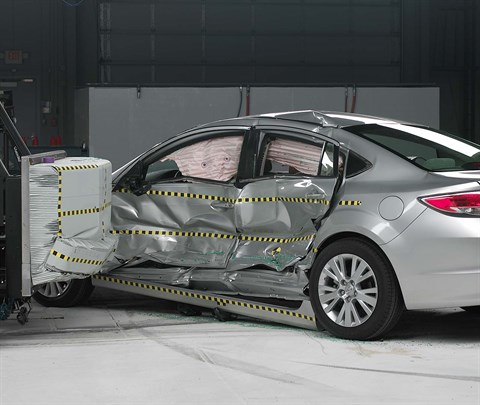
View of the vehicle and barrier just after the crash test.

View of the vehicle after the crash with doors removed, showing the side airbags and damage to the occupant compartment.

The driver dummy's head was protected from being hit by hard structures by the side curtain airbag.
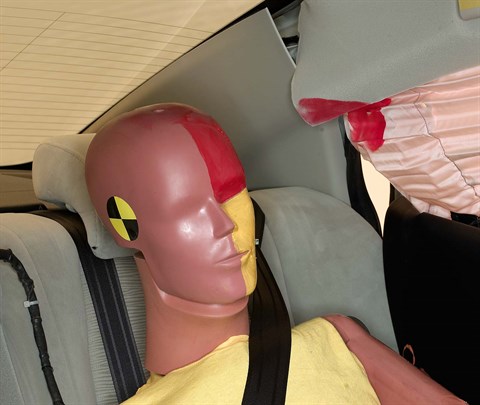
Smeared greasepaint shows where the rear passenger dummy’s head was protected by the side airbag.
Roof strength
Rating applies to 2009-13 models
Tested vehicle: 2009 Mazda 6i Touring 4-door
| Overall evaluation | |
|---|---|
| Curb weight | 3,321 lbs |
| Peak force | 11,789 lbs |
| Strength-to-weight ratio | 3.55 |
Head restraints & seats
Seat type: Manual cloth seats
| Overall evaluation | |
|---|---|
| Dynamic rating | |
| Seat/head restraint geometry |
About the head restraint & seat test
Currently, IIHS tests apply only to front seats.
